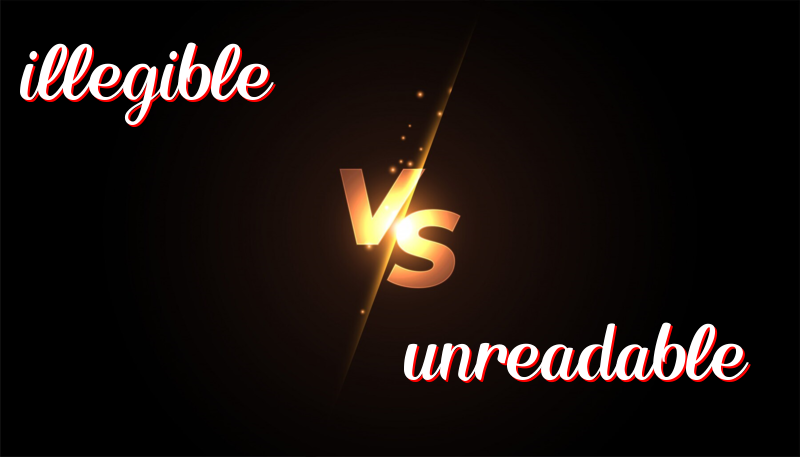Understanding the Distinction Between Illegible and Unreadable: A Simple Guide
Differences Between Illegible and Unreadable
The words “illegible” and “unreadable” can be confusing because they both talk about things that are hard to read. However, they mean different things. Let’s learn about them.
History of the Words
“Illegible” comes from Latin. The word “legere” in Latin means “to read.” So, “illegible” means “not able to be read.” The word “illegible” dates back to the mid-17th century.
“Unreadable” also comes from Old English and means “cannot be read.” The term has been used since around the 14th century.
How to Use Them
Use “illegible” when writing is messy or hard to see. It is about handwriting or print that you cannot read because it is not clear.
Example Sentences for “Illegible”:
- My doctor’s handwriting is often illegible.
- The ink was smudged, making the text illegible.
- The young child’s writing was cute but illegible.
- The note left on the table was too faded and illegible.
- After the rain, the letter became wet and illegible.
Use “unreadable” when a text is too boring, difficult to understand, or doesn’t make sense. It is about the content, not the way it looks.
Example Sentences for “Unreadable”:
- The book was so boring it was unreadable.
- His essay was full of big words and was unreadable.
- The scientist’s report was too complex and unreadable.
- The code was filled with errors and unreadable.
- The poem was disorganized and unreadable.
Trick to Remember the Difference
Think of “illegible” as “I can’t read it because of how it looks.” For “unreadable,” think “I can’t read it because of what it says.”
Summary
Remember, “illegible” is about the appearance of the writing and how difficult it is to read. “Unreadable” is more about the difficulty or dullness of understanding the content. Knowing these differences can help you use the right word when you want to describe something hard to read.

Leave a Reply
You must be logged in to post a comment.